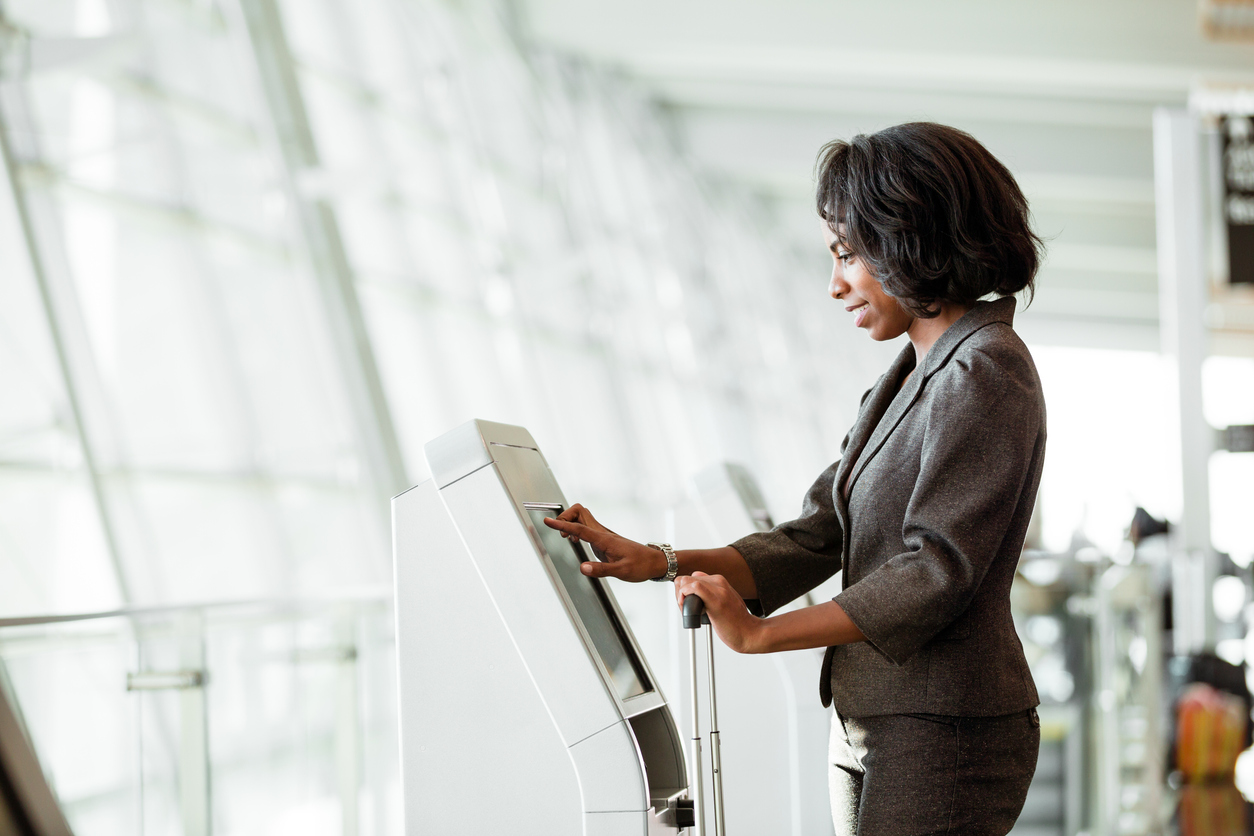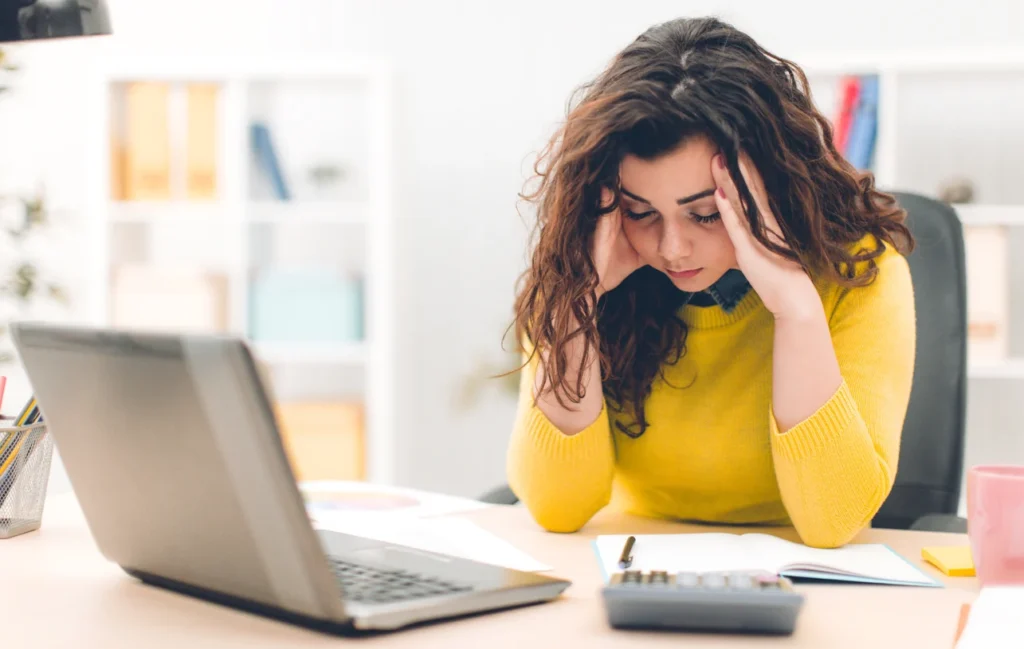Understanding a Visitor Management System [Step-By-Step Guide]
![Understanding a Visitor Management System [Step-By-Step Guide] Understanding a Visitor Management System [Step-By-Step Guide]](https://5012494.fs1.hubspotusercontent-na1.net/hub/5012494/hubfs/A-Guide-To-Visitor-Management-System.jpg)
6 Feb 2023
What’s the best way to welcome a visitor?
For most people, it’s a greeting or smile, maybe a friendly nod to where they can sit or what they should do. Even at a business location, people want to be greeted and taken care of.
Keeping people in order while they’re waiting to be served can be a challenge, especially without hiring extra employees to handle customer service.
Thankfully, modern solutions exist for this age-old problem. Visitor management software is a great way to monitor your customers at any location.
What is a Visitor Management System?
A visitor management system is exactly what it sounds like: the technology used to manage guests when they arrive at a business site.
People who visit your company aren’t just there to waste time. They want to get something done, and most of the time they want it done quickly. Visitor management works because it helps businesses become more efficient. In a 2019 survey, 94% of on-site professionals said that visitor management systems boosted operational efficiency.
Technologies used in a visitor tracking system include a wide variety of tools such as kiosks, apps, and more. More traditional forms of visitor management involve having admin personnel check people in manually by hand using pen and paper, or a spreadsheet. Nowadays, it’s common to offer visitors the option to self-check-in or automatically register.
So what’s the scoop on visitor management systems? Is it worth switching to a state-of-the-art electronic check-in system to keep guests happy?
Types of Visitor Management Solutions
There are as many ways to facilitate visitor check-in as there are companies. However, most visitor management systems fall under these main categories.
- Traditional/Manual
- On-Site/Kiosk
- Registration Apps
Traditional/Manual Visitor Sign-In System
If your visitor check-in system requires customers to interact with a human-operated checkpoint, then you’re probably running a manual system. This includes:
- Greeters handing out forms at the door
- Receptionists logging visitors by hand
- Sign-in books for self-check-in
Operating a traditional visitor registration system can add a personal touch if done right. On the other hand, manual check-ins are more likely to lead to mistakes, delays, and other inefficiencies.
Lobby Management

Generally speaking, lobby management is a subset of a traditional visitor management solution. This is the process by which greeters or lobby managers tend to the flow of people coming through a lobby area, overseeing the check-in process. Their duties include four major areas:
- Connecting guests to managers or other staff
- Providing information to visitors
- Assisting customers with simple transactions
- Manage the flow of visitors in the waiting area
Nowadays, “lobby management” is also occasionally used to describe more technically advanced solutions that help companies manage their visitors.
On-Site/Kiosk Visitor Tracking Software

You’ve probably seen the touch screen stands at fast-food restaurants or government agencies. They’re easy to use and require no manual customer service. Just load them up with the right sign-in software and they’ll collect any customer information you need when visitors are arriving on-site.
When installed correctly, kiosks are even more effective at tracking guests than human agents. They can help you:
- Reduce costs. There’s a one-time cost to install and maintenance is cheaper than paying an employee’s salary.
- Save time. Let visitors register themselves to cut down on needless back-and-forth.
- Touchless check-in. Human contact is risky during the coronavirus pandemic. Kiosks reduce the extra risk by removing an extra person from the equation.
- Improve customer service. Load any FAQ’s into the kiosk and they can be a one-stop-shop for checking-in faster than ever. 69% of customers judge the quality of their experience with a company by how quickly their inquiry was resolved. When everything is more efficient, customers will think better of your company.
The only downside to on-site kiosks is the limitations of their physical existence. Generally speaking, they can’t be moved around easily throughout the workday, which makes them less flexible at checking people in.
Registration Apps
A visitor registration app takes out the middleman entirely, letting your customers directly check-in via their phone, tablet, or computer. Real-time notifications keep them updated on the status of their inquiry, meaning they can even show up on-site later without needing to queue up.
Unlike a kiosk or manual sign-ins, the process is completely touchless. You simply check-in through your phone, arrive on time, and you can be served right then and there. A good visitor check-in app streamlines the process for customers and agents alike.
Customer Self Check-In
Self-check-in refers to when customers can check in with minimal or no outside assistance. They fill out a form provided via a kiosk or app. On-site personnel is then alerted to guide them to the appropriate next step.
At first, this might seem counterintuitive. Don’t customers feel ignored without customer service personnel agents attending to them throughout the whole process? Not really.
These days 90% of customers expect online options for customer support. Online solutions are better and faster than checking in with a person.
For a company, it’s a no-brainer for how efficient self-check-in is. Just set up a few fillable fields and customers will do the work for you.
iPad/iPhone Visitor Management
iPad visitor management functions similarly to a kiosk. iPad stands are set up throughout the lobby area, allowing guests to access sign-in software through the simple interface. Unlike your average kiosk, iPads are easier to move: you can set them up at the front desk, with a stand, at a wall, or anywhere else that’s convenient for your space.
iPhone visitor sign-in software is mobile-based, prompting guests to check-in through their phones. The check-in process is usually completed by downloading an app, accessing a web link, or scanning a QR code.
Touchscreen-based visitor check-in software is intuitive. It only takes three steps:
- Show up
- Access the check-in interface via phone or iPad
- Receive check-in confirmation
Quick and easy, no guesswork required.
Cloud-Based Systems
Yes, there’s a difference between a software-based digital sign-in system and a cloud-based one.
Software-based systems rely on the installed software to save and update data. Cloud-based solutions, on the other hand, save your guests’ information in the cloud. You can access this information from any device, in any location. It’s far more secure than simply relying on software, which is vulnerable to outside security risks.
Besides, cloud-based solutions generally offer a free trial, making it easier to try out and adapt. They don’t require a minimum installment cost or force you to install add-on features. Updates are usually automatic, meaning you don’t have to manually update the software on each device.
As your business grows, cloud-based visitor management scales with you. There’s no need to install additional servers: just expand your plan along with your business.
Common Problems with Traditional Visitor Management Systems
While a traditional visitor check-in system is less technically complicated to set up, logging your visitors manually with pen and paper or a spreadsheet is less than optimal. Here’s a breakdown of four common problems with a manual system, compared to its digital counterpart.
| Traditional Visitor Management System | Electronic Visitor Management System |
| Slow. Logging a visitor in by hand is slow no matter how you cut it: queues, back-and-forth, searching through the system. | Fast. An electronic signing-in system speeds your customers through check-in, in a few taps. |
| Prone to a clerical error and takes up more of the staff’s time. | Fewer errors. Customers enter their own information and are responsible for accurate data |
| Not secure. Lock and key aren’t enough for confidential information. | Secure. Authorize only select personnel to access data, protect your customers’ information. |
| Poor customer experience: too much waiting, delays, and mistakes. | Great customer experience. Quick, easy interface, complete within minutes. |
Manual registration simply isn’t worth the time, effort, and staff. Save yourself the headache by switching over to software.
How to Choose a Visitor Management System

Need guidance picking the right visitor management system? We’ve got you covered. Here are a few things to take into consideration when choosing the right option.
- Scalability. Your company will grow, and you need a solution that’ll grow with you. How many resources can you expend on expanding your visitor management system?
- User interface. How easy is it for guests to check-in? Is the process quick? Can they figure out how to navigate the system? Your solution should be easy to pick up and use.
- Pricing. How much can you afford for visitor software? Do you have to pay more to scale? Are you limited by the device?
- Customizable. Can you tweak the system to suit your needs? This might include branding, logos, custom fields.
- Back-ups. Is data local or saved to the cloud? Do you have a backup of essential information?
- Security. 64% of companies experience cyber attacks. Don’t leave your customers’ data up to chance: pick a secure solution.
No two companies have the same needs when it comes to picking how to greet their guests. Balancing function with affordability is key.
Benefits of Cloud-Based Visitor Management Systems
As mentioned above, cloud-based visitor management systems have many major perks over more traditional systems. Here’s a quick comparison.
| Traditional Systems | Cloud-Based Visitor Management System |
| Incompatible technology, no synchronization between devices. Customers and staff get lost in finding information. | Better customer service. Customers can find their information in the cloud easily, check-in from anywhere, and on any device. |
| Customers need to reach customer service physically, whether on-site or through phone calls. | Touchless and accessible service from anywhere and anytime. |
| Requires people to physically interact with customer service agents, putting people at risk for viral contamination. | Touchless and safe. |
| Slow, more likely to experience manual delays and mishaps. | Fast and efficient. |
| No standard way to review the performance of customer service professionals. | Provides analytics and data on customer experience, allowing you to continuously improve. |
Implementation: Setting Up Your Customer Check-In System
Establishing an implementation plan is one of the great barriers to setting up a new electronic visitor sign-in system. Here’s a quick and easy guide to setting up your visitor management system.
- Design the check-in process. Customer experience is king. Walkthrough the registration process from the customer’s point of view. What are the pain points? Could it be improved even more by adding or removing data fields?
- Pinpoint locations. Where do you want to set up devices? How many do you really need? How much of the work can you outsource by recommending customers access their appointments from home?
- Establish hardware or system demands. No matter what system you implement, you’ll probably have to buy some kind of hardware. Set up a budget and scale accordingly. Do you have the bandwidth for this many devices?
- Personnel buy-in. Get input from your customer service staff. How are they most likely to use the check-in system? How will it affect their other duties? Do they need training? Don’t forget to introduce the technology to the rest of your company. Everyone needs to use your system for it to work as intended.
- Test the system. Does the new registration system have notifications? Ask your employees to test it out. You don’t want customers to miss appointments because of a back-end mishap.
- Monitor customer experience. Your work doesn’t end even when the system is implemented. Keep monitoring customer experiences and see where things can be streamlined.
Visitor Management Case Studies
Maybe you’re still wondering if customer check-in software works? Check out the case studies below to see what kind of results various organizations have experienced from adopting a great VMS.
St Edmund’s College
To keep students safe, schools need to track information on who’s visiting campus at all times.
St Edmund’s College, England’s oldest Catholic school, converted their lobby visitor management system into a customized visitor sign-in kiosk system, complete with visitor badges.
Here are the results:
- Students and faculty report “extraordinary” feedback.
- Reduced admin with increased security.
- Able to monitor late arriving and early departing students.
- Real-time list of people on-site helps during emergencies and fire drills.
Oerlikon Metco
Originally, this global surface solutions provider relied on a server-based VMS that led to inactive servers for extended periods. They switched to a cloud-based visitor management system and immediately saw:
- Reduced costs
- Resolved stability issues: no more server downtime
- Removing the complexity of single-use applications
- Standardized kiosks greeting all visitors
Within minutes of pressing a button, Oerlikon Metco found out who’s on-site at that moment, with no worries about crashing systems or information not syncing properly.
Brooklyn Navy Yard
This shipyard and industrial complex experiences hundreds of tenants and employees entering the location every day. Their initial web portal solution was limited, without a customer-friendly interface that slowed down registration and no automatic ID checks. Once they integrated a brand new VMS, they were able to:
- Scan guest QR codes to log visitors
- Receive notifications of guest arrivals
- Real-time watch list for security staff to review
- Touchless register, reducing exposure to COVID-19
Although 1,000 essential employees were still moving through the main site during the height of the pandemic to keep things running, there were no reported coronavirus cases thanks to the precautions taken by the security staff on-site. Visitor management software isn’t just a good way to streamline your guest experience: it has the potential to keep visitors safe and touch-free in times like these.
Frequently Asked Questions on Electronic Visitor Management

You probably still have questions about visitor management systems, and you’re not alone. Visitor management systems are comparatively recent news in the history of business hospitality. Here are some fast answers to your quick questions.
Why does visitor management matter?
A: If you don’t know what’s going on in your company, how are you going to help your customer figure it out? It’s the key to better customer service, better security, and more privacy for both your employees and visitors.
Can I use visitor management system software on my iPad/iPhone/table/device?
A: If you use a cloud-based visitor management system it’s likely to be accessible via any touchscreen device you can think of.
Accessibility is the name of the game. You want your customers to be able to register, wherever they are.
Isn’t digital registration confusing?
A: With the customer sign-in software, no. You’ll receive real-time notifications, updates, and receipts for your registration. You can even book appointments ahead of time to make sure your spot as a visitor is saved.
What’s a great visitor management system that also lets customers book appointments and manage calendars?
A: Skiplino is a great solution for all of the above and more. None of your customers will have to wait in line any longer with this awesome automatic queue system.
Where can I get sign-in software free?
A: Free visitor management software for iPad, iPhone, or whatever other devices you have is available, but you’re going to have to pay for the most quality solutions. If you’re not keen to drop money before trying things out, you can always try out Skiplino for free!
Latest



Similar Reads


All Rights Reserved @2025 Skiplino Technologies WLL.




